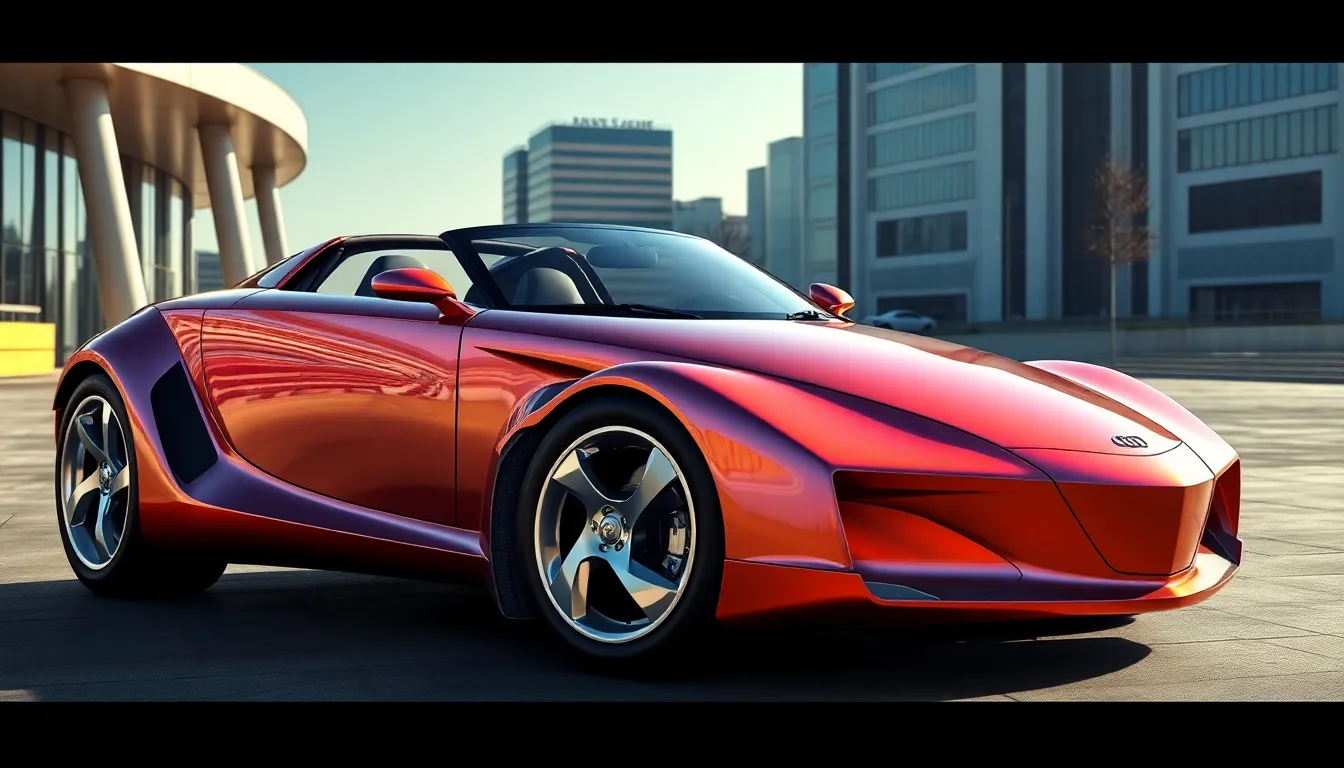Remember when we thought the industry might end because of a computer glitch? The Y2K era brought us more than just millennium bug fears – it delivered some of the most iconic and futuristic cars we’ve ever seen. From sleek concept vehicles that looked like they belonged in sci-fi movies to production cars that pushed design boundaries like never before, the late ’90s and early 2000s automotive industry was nothing short of revolutionary.
We witnessed automakers embrace bold curves, radical aerodynamics, and cutting-edge technology that seemed impossibly advanced for its time. Cars like the Plymouth Prowler, Audi TT, and BMW Z8 didn’t just transport people – they transported us into the future we’d only dreamed about.
These Y2K-era vehicles captured our collective imagination and redefined what cars could look like. Today, we’re diving into the most memorable automobiles from this fascinating period that perfectly embodied the optimism and innovation of the new millennium.
What Made Y2K Cars So Special and Iconic
Y2K cars captured our collective imagination through their groundbreaking approach to automotive design and technology. Manufacturers embraced radical styling cues that departed dramatically from the conservative designs of previous decades, creating vehicles that looked like they belonged in science fiction movies rather than suburban driveways.
Bold geometric shapes defined the Y2K aesthetic, with designers favoring sharp angles, aggressive curves, and unconventional proportions. We saw this trend exemplified in vehicles like the Honda S2000’s muscular haunches and the Dodge Viper’s serpentine silhouette. These cars rejected traditional automotive proportions in favor of dramatic visual statements that announced their presence from blocks away.
Futuristic technology integration set Y2K vehicles apart from their predecessors in meaningful ways. Electronic stability control systems, advanced airbag networks, and sophisticated engine management computers became standard features rather than luxury options. Navigation systems began appearing in mainstream models, while premium vehicles showcased features like adaptive headlights and electronic parking assistance that seemed impossibly advanced at the time.
Experimental materials played a crucial role in Y2K car construction and appearance. Carbon fiber components moved beyond racing applications into production vehicles, while manufacturers explored new plastic composites and aluminum alloys. We witnessed the introduction of unique paint finishes including metallic flakes, pearl coats, and color-shifting pigments that created different appearances under various lighting conditions.
Performance boundaries were consistently pushed beyond previous limitations during this era. Horsepower figures that once belonged exclusively to exotic supercars became available in relatively affordable sports cars and muscle cars. The Chevrolet Corvette Z06 delivered 405 horsepower, while the BMW M3 offered precision handling that rivaled dedicated track machines.
Design philosophy embraced the concept of cars as lifestyle statements rather than mere transportation tools. Manufacturers understood that Y2K consumers wanted vehicles that reflected their technological optimism and desire for individual expression. This approach resulted in cars with distinctive personalities that owners could connect with emotionally, creating lasting brand loyalty that continues today.
The Rise of Futuristic Design Elements in Y2K Cars
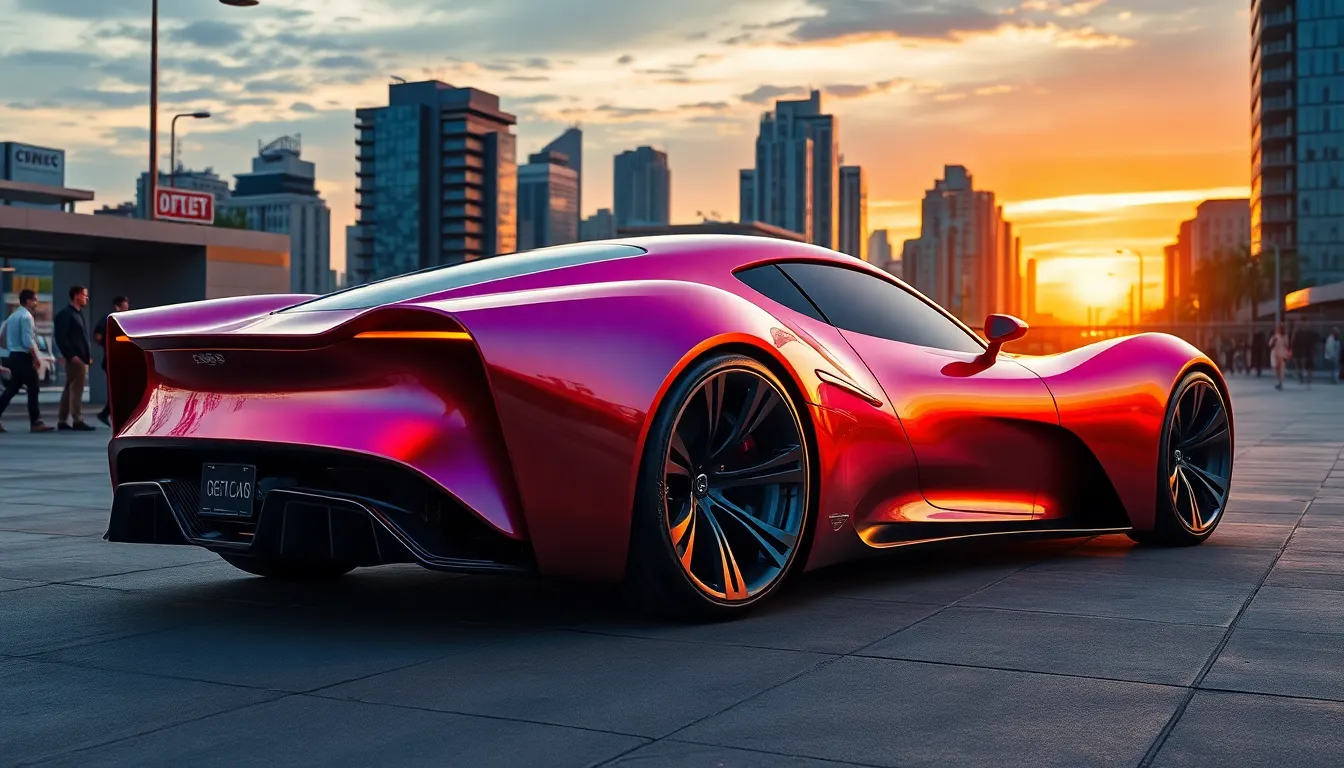
Automakers transformed their design philosophies during the late ’90s and early 2000s, moving beyond traditional automotive aesthetics to create vehicles that embodied tomorrow’s vision. We witnessed an unprecedented shift toward sculptural forms and technological integration that redefined what cars could represent.
Flowing Curves and Organic Shapes
Fluid lines replaced the boxy designs of previous decades as manufacturers embraced biomimetic styling cues. The Chrysler PT Cruiser showcased rounded fender wells and bubble-shaped windows that created a pod-like silhouette reminiscent of spaceship designs. Audi’s TT coupe featured seamless transitions between panels, eliminating sharp creases in favor of continuous curves that appeared to have been molded from a single piece of clay.
Designers drew inspiration from water droplets and wind patterns to create aerodynamic profiles that suggested motion even when stationary. Volkswagen’s New Beetle exemplified this approach with its dome-shaped roof and circular headlights that evoked both retro charm and futuristic simplicity. Ford’s Ka microcar pushed organic design to extremes with its teardrop profile and asymmetrical interior elements that challenged conventional automotive proportions.
Bold Color Schemes and Metallic Finishes
Manufacturers experimented with unconventional paint formulations that created depth and luminosity previously unseen on production vehicles. Chrysler introduced “Prowler Orange” and “Prowler Yellow” on their retro-futuristic roadster, using specially developed metallic flakes that shifted color intensity based on viewing angle. BMW offered “Titanium Silver” and “Phoenix Yellow” on their Z3 and Z8 models, incorporating prismatic pigments that created holographic effects under different lighting conditions.
Electric blue became synonymous with Y2K automotive design, appearing on models like the Honda Insight hybrid and Saturn Ion. These vibrant hues utilized pearlescent additives that produced an almost liquid appearance, suggesting advanced materials and cutting-edge manufacturing processes. Subaru’s “Industry Rally Blue” on the Impreza WRX combined traditional racing heritage with modern color technology that maintained its intensity across various weather conditions.
Space Age Interior Features
Digital displays replaced traditional analog gauges as manufacturers integrated LCD screens and LED lighting throughout cabin environments. The BMW iDrive system introduced in 2001 featured a central controller surrounded by a ring of LED lights, creating an interface that resembled spacecraft control panels. Mercedes-Benz incorporated fiber optic lighting in their S-Class models, using thin strands to create ambient illumination that pulsed gently throughout the interior.
Geometric seat patterns and unconventional material combinations became defining characteristics of Y2K interiors. The Honda S2000 featured aluminum pedals and shift knobs alongside red leather accents that created a cockpit-like atmosphere. Audi’s TT interior utilized brushed aluminum trim pieces arranged in circular patterns around air vents and control surfaces, reinforcing the car’s spherical exterior design language.
Manufacturers integrated early touchscreen technology and voice recognition systems that promised hands-free operation of climate and entertainment functions. These interfaces often featured blue backlighting and angular menu structures that reflected contemporary computer aesthetics, bridging the gap between automotive and technology industries during the dawn of the digital age.
Revolutionary Technology That Defined Y2K Cars
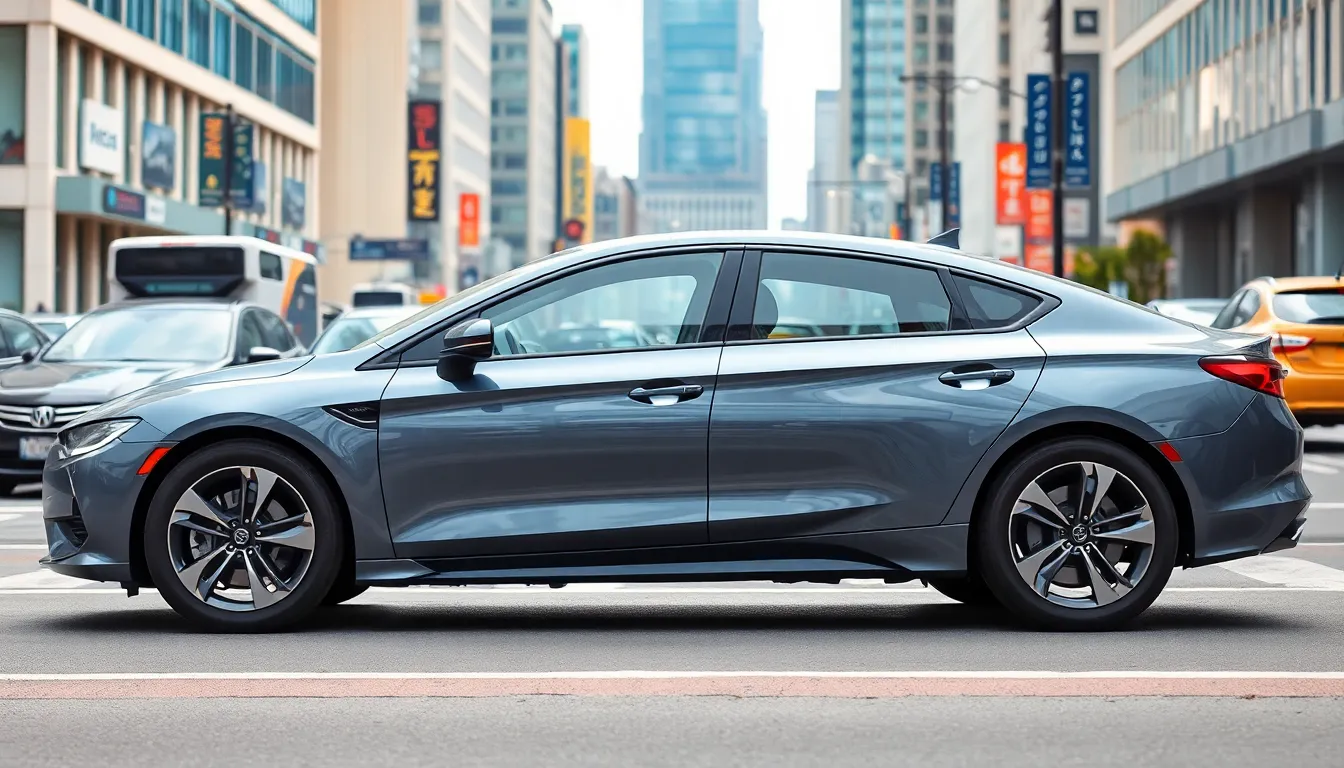
The late 1990s and early 2000s marked a pivotal moment when automotive manufacturers embraced cutting-edge technologies that would reshape the driving experience forever. These innovations transformed cars from simple transportation devices into sophisticated digital platforms.
Early Navigation Systems and Digital Displays
GPS navigation systems made their debut in mainstream vehicles during the Y2K era, fundamentally changing how we approached driving and route planning. Mercedes-Benz introduced the first factory-installed navigation system in their S-Class in 1998, featuring a monochrome display that showed basic turn-by-turn directions.
Digital instrument clusters replaced traditional analog gauges in many models, providing drivers with customizable information displays. The Cadillac Seville featured a comprehensive digital dashboard that showed vehicle diagnostics, trip information, and climate control settings all in one interface. BMW’s iDrive system, launched in 2001 with the 7 Series, pioneered the concept of centralized digital control for various vehicle functions.
Color LCD screens became increasingly common in luxury vehicles, offering enhanced visibility and more detailed mapping information. Toyota’s Prius introduced a multi-information display that showed energy flow between the electric motor and gasoline engine, creating an entirely new category of driver feedback systems.
Advanced Safety Features and Airbag Systems
Electronic Stability Control (ESC) emerged as a game-changing safety technology during this period, preventing countless accidents through computer-controlled intervention. Mercedes-Benz and Bosch developed the first production ESC system in 1995, which became standard equipment across their lineup by 2000.
Side-impact airbags expanded beyond simple door-mounted systems to include curtain airbags that protected occupants’ heads during rollover accidents. Volvo pioneered the Side Impact Protection System (SIPS) in their S80 model, featuring reinforced door frames and strategically placed airbags that reduced injury severity by 40%.
Anti-lock Braking Systems (ABS) became standard equipment on most vehicles, working along with Electronic Brakeforce Distribution (EBD) to optimize stopping distances. Traction control systems prevented wheel spin during acceleration, particularly beneficial for rear-wheel-drive performance cars like the BMW M3 and Chevrolet Corvette.
Adaptive cruise control made its first appearances in luxury vehicles, using radar sensors to maintain safe following distances automatically. Mercedes-Benz introduced Distronic cruise control in 1999, allowing drivers to set following distances and automatically adjust speed based on traffic conditions.
Hybrid Engine Technology Emergence
Toyota revolutionized the automotive industry with the Prius launch in 1997, introducing hybrid electric technology to mass-market consumers for the first time. The Hybrid Synergy Drive system combined a gasoline engine with electric motors, achieving fuel economy ratings of 50+ mpg in real-industry driving conditions.
Honda followed with the Insight in 1999, featuring an even more efficient hybrid powertrain that delivered EPA ratings of 70 mpg highway. The Insight’s lightweight aluminum construction and aerodynamic design demonstrated how hybrid technology could enhance both efficiency and performance.
Electric power steering systems replaced hydraulic units in hybrid vehicles, reducing engine load and improving fuel economy by up to 3%. These systems also enabled features like variable steering assistance that adjusted based on driving speed and conditions.
Regenerative braking technology captured kinetic energy during deceleration, converting it back into electrical energy to charge the hybrid battery pack. This innovation extended electric driving range while reducing brake pad wear, creating a more sustainable approach to vehicle operation that would influence automotive design for decades to come.
Most Influential Y2K Cars That Shaped Automotive History

Several groundbreaking vehicles emerged during the Y2K era that fundamentally altered the automotive industry for decades to come. These cars didn’t just capture the zeitgeist of the millennium change—they established design languages and technological foundations that continue influencing modern vehicles today.
Toyota Prius: The Hybrid Pioneer
Toyota’s Prius revolutionized the automotive industry by introducing mass market hybrid technology that made fuel efficiency stylish and accessible. Launched in 1997 in Japan and arriving in the US by 2000, this compact sedan featured a groundbreaking powertrain combining a 1.5-liter gasoline engine with an electric motor, achieving an unprecedented 52 mpg in city driving.
Design elements of the first generation Prius emphasized aerodynamic efficiency with its distinctive wedge shaped profile and smooth underbody paneling. Engineers prioritized function over traditional aesthetics, creating a vehicle that looked unmistakably different from conventional cars of the era.
Technology integration reached new heights with the Prius’s sophisticated energy management system that seamlessly switched between electric and gasoline power. The regenerative braking system captured energy typically lost during deceleration, while the continuously variable transmission eliminated traditional gear shifts for optimal efficiency.
Environmental impact became a selling point as the Prius achieved Super Ultra Low Emission Vehicle certification, producing 90% fewer emissions than conventional vehicles. Hollywood celebrities embraced the model as a statement of environmental consciousness, with stars like Leonardo DiCaprio and Cameron Diaz becoming early adopters.
BMW Z8: Retro-Futurism at Its Peak
BMW’s Z8 represented the pinnacle of millennium era automotive artistry with its stunning aluminum space frame construction and hand built manufacturing process. Limited to just 5,703 units worldwide between 2000 and 2003, this roadster commanded a $128,000 price tag and featured a naturally aspirated 4.9-liter V8 engine producing 394 horsepower.
Design inspiration drew heavily from BMW’s 507 roadster of the 1950s, reimagined through contemporary manufacturing techniques and materials. The Z8’s flowing lines and distinctive kidney grille created a timeless silhouette that honored BMW’s heritage while embracing futuristic construction methods.
Advanced materials defined the Z8’s construction with its aluminum space frame weighing just 3,494 pounds even though the roadster’s substantial dimensions. Carbon fiber body panels and magnesium components further reduced weight while maintaining structural rigidity, demonstrating the potential of exotic materials in automotive applications.
Performance characteristics positioned the Z8 as a legitimate supercar competitor, accelerating from 0 to 60 mph in just 4.2 seconds. The six speed manual transmission and sport tuned suspension delivered pure driving dynamics that automotive journalists consistently praised for their precision and engagement.
Volkswagen New Beetle: Nostalgic Modernism
Volkswagen’s New Beetle transformed retro design philosophy by proving that nostalgic styling could successfully merge with contemporary technology and safety standards. Introduced in 1997, this front wheel drive compact car sold over 1.2 million units during its initial production run, capturing consumer imagination with its distinctive rounded silhouette.
Platform engineering utilized Volkswagen’s Golf chassis to provide modern handling dynamics and safety features while maintaining the iconic Beetle proportions. The New Beetle offered multiple engine options including a 1.8-liter turbocharged four cylinder that produced 150 horsepower, delivering performance that far exceeded the original Beetle’s capabilities.
Interior design celebrated playful functionality with its dashboard mounted flower vase becoming an instantly recognizable feature. The spacious cabin accommodated four adults comfortably while incorporating modern amenities like air conditioning, power windows, and available leather seating that the classic Beetle never offered.
Cultural impact extended far beyond automotive circles as the New Beetle became a fashion statement and lifestyle choice for diverse demographics. Marketing campaigns targeted both nostalgic Baby Boomers who remembered the original and younger buyers attracted to the car’s cheerful, optimistic design philosophy during the dot com boom era.
Performance Legends Among Y2K Cars
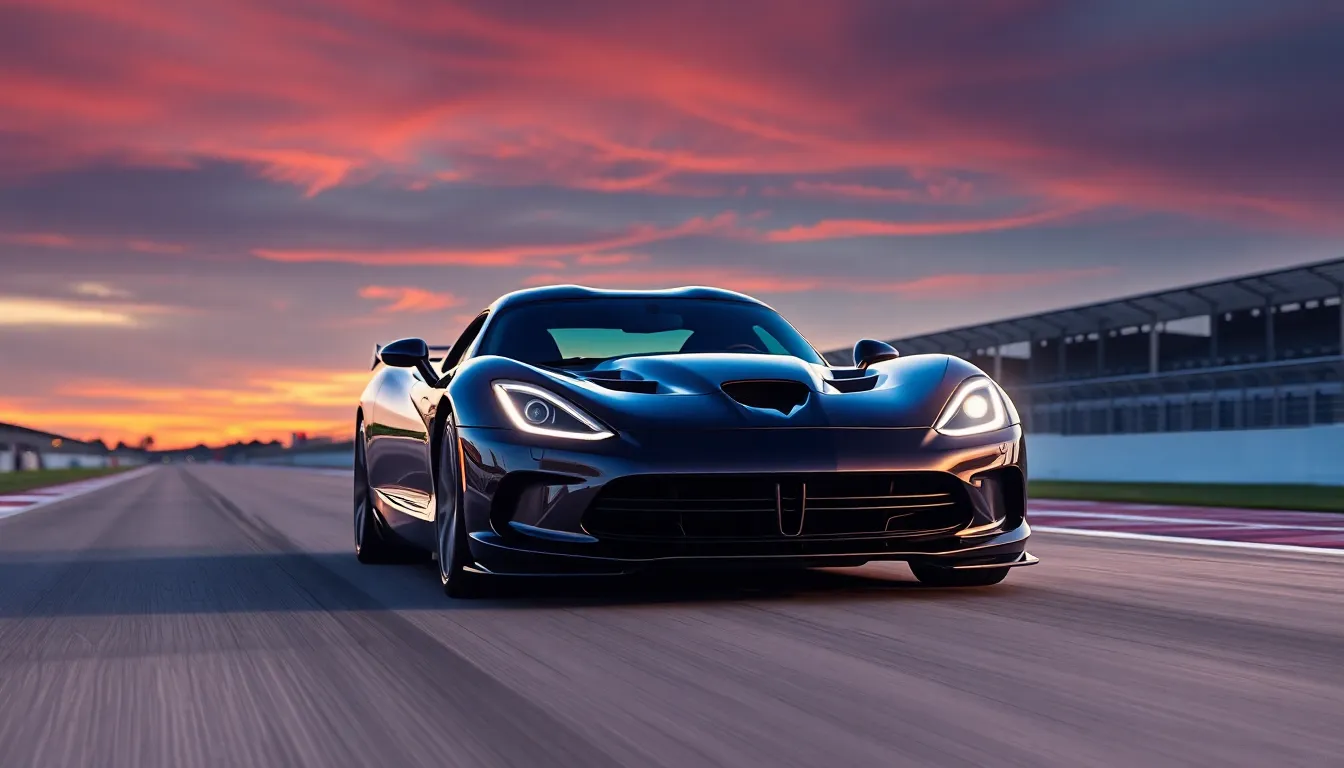
Y2K cars didn’t just push design boundaries; they delivered raw power that redefined what performance meant. These legendary machines combined cutting-edge technology with aggressive styling to create unforgettable driving experiences.
Dodge Viper GTS: Raw American Power
Raw American muscle found its perfect expression in the Dodge Viper GTS, featuring an 8.0-liter V10 engine that produced 450 horsepower and 490 lb-ft of torque. This beast could accelerate from 0 to 60 mph in just 4.1 seconds, making it one of the fastest production cars of its era.
Aggressive styling defined the GTS with its iconic double bubble roof design and distinctive side exhausts that announced its presence with a thunderous roar. We witnessed the Viper’s dominance on racetracks worldwide, where it secured many victories in professional racing series like the American Le Mans Series.
Construction techniques borrowed from racing helped reduce weight while maximizing rigidity, creating a pure driver’s car that demanded respect. The Viper GTS eliminated creature comforts in favor of performance, featuring a stripped-down interior focused entirely on the driving experience.
Ferrari 360 Modena: Italian Engineering Excellence
Italian engineering excellence reached new heights with the Ferrari 360 Modena, powered by a naturally aspirated 3.5-liter V8 engine delivering 395 horsepower at 8,500 rpm. This mid-engine marvel could sprint from 0 to 60 mph in 4.3 seconds while achieving a top speed of 183 mph.
Revolutionary design elements included the first Ferrari to feature a space frame chassis made entirely of aluminum, reducing weight by 28% compared to its predecessor. We saw Ferrari introduce their F1-Trac traction control system and electronic differential, technologies derived directly from Formula 1 racing.
Aerodynamic innovations included active aerodynamics with automatically adjusting spoilers that optimized downforce based on speed and driving conditions. The 360’s distinctive side air intakes weren’t just for show; they provided crucial cooling for the mid-mounted engine while improving the car’s aggressive appearance.
Performance credentials extended beyond straight-line speed, as the 360 Modena could lap the legendary Nürburgring in under 8 minutes, establishing it as a true supercar benchmark.
Subaru Impreza WRX: Rally-Bred Performance
Rally-bred performance came to public roads through the Subaru Impreza WRX, featuring a turbocharged 2.0-liter flat-four engine producing 227 horsepower and all-wheel-drive capability. This combination delivered exceptional traction and handling in all weather conditions, making it accessible performance for everyday drivers.
Racing heritage directly influenced the WRX design, with Subaru’s Industry Rally Championship success translating into production car technology. We observed how the car’s rally DNA manifested in features like the hood scoop for intercooler cooling and aggressive fender flares accommodating wider wheels.
All-wheel-drive system utilized a center differential with viscous coupling that could transfer power between front and rear wheels instantly based on traction conditions. The WRX could accelerate from 0 to 60 mph in 5.9 seconds while maintaining remarkable stability through corners that would challenge other vehicles.
Affordability made rally-inspired performance accessible to enthusiasts who couldn’t afford exotic supercars, democratizing high-performance driving experiences. The WRX established a new category of performance cars that combined practicality with serious capability, influencing an entire generation of sport compact vehicles.
Luxury Innovations in Y2K Cars

While performance legends dominated headlines, luxury manufacturers quietly orchestrated a technological revolution that would redefine automotive sophistication. These premium vehicles showcased the most advanced innovations of the era, establishing benchmarks that influenced the entire industry.
Mercedes-Benz S-Class: Technological Sophistication
Command and control systems transformed the S-Class into a mobile command center with the introduction of COMAND (Cockpit Management and Data system) in 1998. This revolutionary interface integrated navigation, audio, and vehicle settings into a single display, setting the standard for luxury car infotainment systems. Mercedes engineers developed the first production vehicle with GPS navigation factory-installed, featuring detailed mapping and turn-by-turn directions that seemed impossibly futuristic at the time.
Active Body Control (ABC) debuted in the 2000 S-Class, utilizing hydraulic actuators at each wheel to eliminate body roll and pitch during acceleration, braking, and cornering. The system could adjust suspension settings 1,000 times per second, delivering an impossibly smooth ride while maintaining precise handling characteristics. This technology cost Mercedes over $1 billion to develop but established the brand’s reputation for engineering excellence.
Safety innovations reached unprecedented levels with the introduction of Pre-Safe technology in 1999, which could detect impending collisions and prepare the vehicle by tightening seatbelts, adjusting seats, and closing windows. The S-Class featured 11 airbags compared to the industry standard of 2-4, including innovative side-impact protection and window bags that deployed along the entire length of the cabin.
Lexus LS: Redefining Premium Comfort
Whisper quiet cabins became Lexus’s signature achievement through extensive acoustic engineering that utilized laminated glass, sound-deadening materials, and precision manufacturing tolerances. The 1998 LS 400 achieved noise levels of just 58 decibels at highway speeds, quieter than many luxury sedans sitting in a parking garage. Engineers spent over 1 million hours testing different materials and construction techniques to achieve this unprecedented level of refinement.
Adaptive cruise control appeared in the 2001 LS 430 as one of the first production implementations of radar-based speed management. The system could maintain safe following distances automatically, reducing driver fatigue during long journeys while showcasing Lexus’s commitment to both luxury and safety. This technology required collaboration with aerospace suppliers who provided military-grade radar components adapted for automotive use.
Climate control precision reached new heights with the introduction of four-zone automatic climate control that could maintain different temperatures within two degrees for each passenger compartment. The system featured infrared sensors to monitor cabin temperature and humidity levels, automatically adjusting airflow patterns to ensure optimal comfort. Lexus engineers developed this technology specifically to compete with German luxury standards while exceeding customer expectations.
BMW 7 Series: Executive Class Redefined
iDrive technology revolutionized luxury car interfaces when BMW introduced this single-controller system in the 2002 7 Series, replacing dozens of traditional buttons and switches. The rotary controller allowed drivers to navigate through hundreds of vehicle functions using intuitive menu structures displayed on a central screen. This system required over 65 separate computers throughout the vehicle, making the 7 Series one of the most technologically complex production cars ever built.
Ever-changing Drive active anti-roll bars eliminated body roll entirely through hydraulic actuators that could apply opposing forces within milliseconds of detecting cornering forces. The system transformed the massive luxury sedan into a vehicle that handled like a sports car while maintaining the comfort expected from a flagship BMW. Engineers developed this technology in partnership with Formula 1 suppliers, adapting racing technology for luxury applications.
Executive seating packages elevated rear passenger comfort to airline first-class levels with seats that could recline, massage, heat, cool, and even provide lumbar support adjustments for individual vertebrae. The 2003 7 Series featured rear seats with 20-way power adjustment, individual entertainment screens, and fold-out work tables with integrated laptop connections. These innovations cost BMW over $3,000 per vehicle but established new standards for executive transportation.
Affordable Y2K Cars That Democratized Style
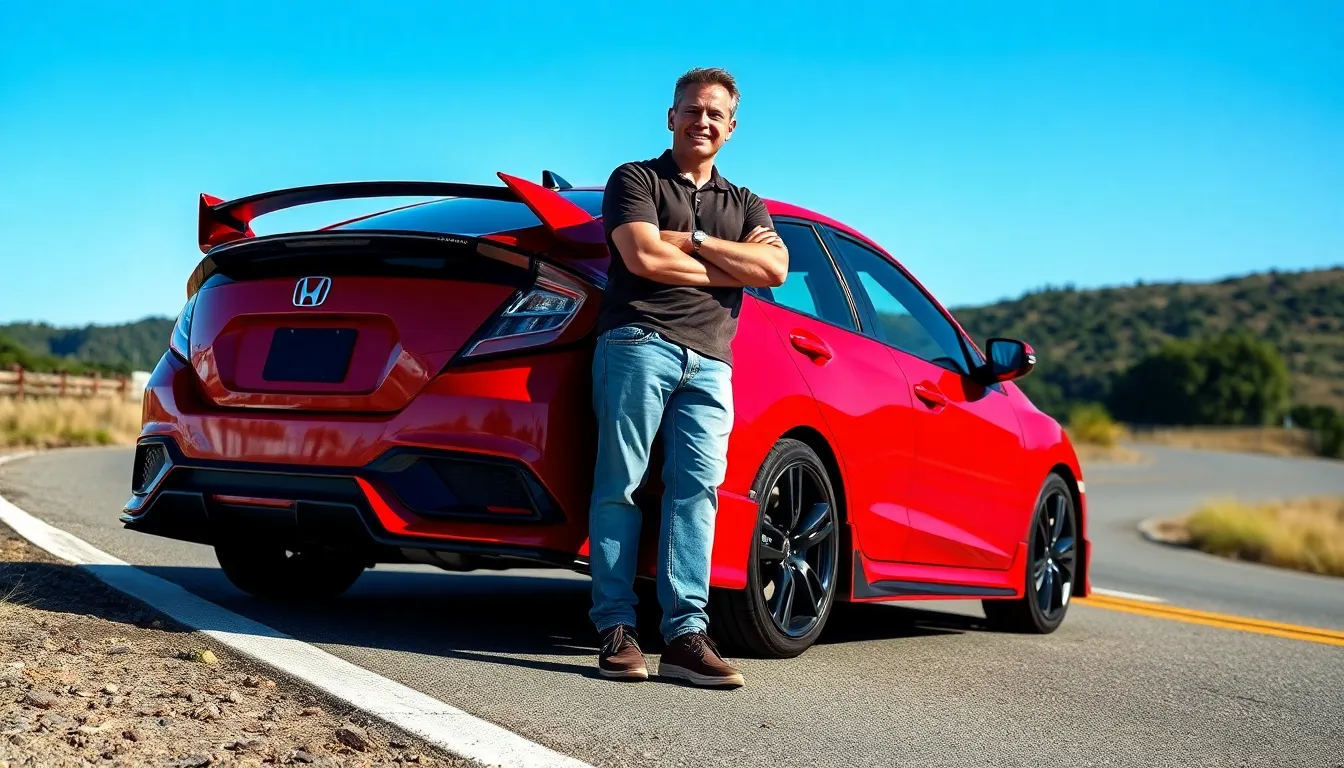
While luxury manufacturers pushed boundaries with premium technologies, accessible Y2K cars brought futuristic styling and performance to everyday drivers. These models proved that innovative design wasn’t reserved for the wealthy.
Honda Civic Si: Sporty Accessibility
Honda’s Civic Si transformed the compact car segment by delivering rally-inspired performance at an attainable price point. We witnessed a 160-horsepower VTEC engine that screamed to 8,000 RPM, making every commute feel like a race track experience. Aggressive body cladding and a distinctive rear spoiler gave the Si its unmistakable Y2K aesthetic, while maintaining the Civic’s reputation for reliability.
Sport-tuned suspension and limited-slip differential provided handling dynamics previously found only in expensive sports cars. The Si’s close-ratio transmission offered precise gear changes that engaged drivers in ways automatic economy cars couldn’t match. Interior upgrades included racing-inspired gauges and supportive bucket seats that reinforced the car’s performance mission.
Mazda Miata: Pure Driving Joy
Mazda’s second-generation Miata captured the Y2K spirit with flowing curves and pop-up headlights that became automotive icons. We found ourselves behind the wheel of a perfectly balanced roadster that weighed just 2,400 pounds, making every corner a celebration of momentum and physics. The 1.8-liter engine produced 142 horsepower, creating an ideal power-to-weight ratio for spirited driving.
Ergonomic cockpit design placed every control within easy reach, while the short-throw shifter delivered tactile feedback that connected drivers to the mechanical experience. Mazda’s engineers prioritized communication over raw power, resulting in steering that telegraphed road surface details and suspension that rewarded smooth inputs. This philosophy made the Miata accessible to novice enthusiasts while satisfying experienced drivers.
Ford Focus: European Handling for Everyone
Ford’s Focus brought sophisticated European chassis tuning to American driveways, democratizing the handling characteristics of premium imports. We experienced independent rear suspension that eliminated the torque steer common in front-wheel-drive economy cars of the era. The Focus’s platform originated from Ford’s European operations, where winding roads demanded superior dynamics over straight-line comfort.
Interior packaging maximized space efficiency while incorporating Y2K design elements like wraparound dashboard shapes and available metallic trim accents. Engine options included a 130-horsepower Zetec unit that provided adequate performance for daily driving and weekend adventures. Ford’s commitment to safety included standard dual airbags and optional side-impact protection, making the Focus a responsible choice for budget-conscious families seeking European refinement.
Design Trends That Made Y2K Cars Instantly Recognizable
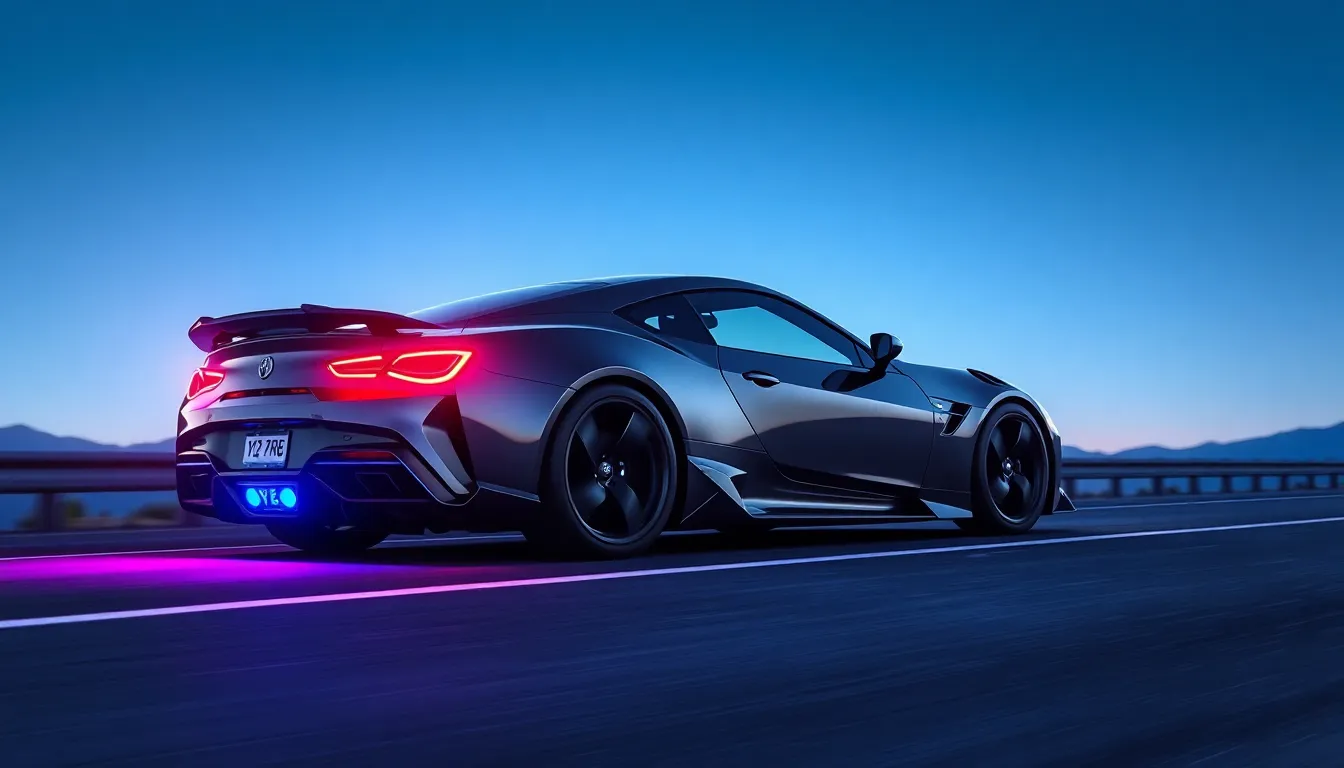
Y2K automotive designers revolutionized visual identity through distinctive styling elements that instantly communicated futuristic intent. We witnessed an unprecedented shift toward bold geometric forms and technological integration that transformed cars into rolling statements of digital age optimism.
Headlight Evolution and LED Integration
Headlight designs became sculptural focal points that defined Y2K car personalities with unprecedented creativity. Manufacturers embraced angular geometries and projector beam technology, replacing traditional round or rectangular units with complex multi-element assemblies. BMW’s angel eyes on the E46 3 Series created an instantly recognizable light signature, while Audi pioneered distinctive LED daytime running lights that became brand hallmarks.
Early LED integration marked a technological leap forward in automotive lighting systems during this era. Luxury manufacturers like Mercedes-Benz incorporated LED accent lighting in their S-Class models, creating jewel-like illumination patterns that signaled premium positioning. Performance cars utilized HID xenon technology to produce brilliant white light output, dramatically improving nighttime visibility while creating an aggressive aesthetic presence.
Adaptive lighting systems emerged as cutting-edge features that automatically adjusted beam patterns based on driving conditions. These innovations demonstrated manufacturers’ commitment to merging safety functionality with distinctive visual appeal, establishing lighting design as a crucial brand differentiator.
Aerodynamic Body Kits and Spoilers
Body kit integration transformed Y2K cars into wind-sculpted machines that prioritized both performance and visual drama. Manufacturers developed comprehensive aerodynamic packages featuring front air dams, side skirts, and rear diffusers that created cohesive styling themes. The Honda Civic Si showcased aggressive body cladding that improved downforce while improving the car’s sporty character.
Spoiler designs reached new levels of complexity and functionality during the Y2K period. Active rear spoilers on vehicles like the Porsche 911 automatically deployed at exact speeds, combining aerodynamic efficiency with technological showmanship. Fixed wing designs became increasingly elaborate, with multi-element configurations appearing on performance models to maximize downforce generation.
Ground effects packages created dramatic visual transformations that lowered cars’ perceived center of gravity. Side skirt extensions and front splitters channeled airflow more efficiently while creating aggressive stance characteristics that appealed to performance-oriented buyers seeking maximum visual impact.
Interior Tech Integration and Ergonomics
Dashboard layouts underwent radical reimagining as manufacturers integrated digital displays and electronic controls throughout cabin environments. Center console designs evolved from traditional button arrays to sophisticated command centers featuring LCD screens, rotary controllers, and touch-sensitive surfaces. BMW’s iDrive system pioneered centralized interface control, allowing drivers to manage navigation, audio, and vehicle settings through a single intuitive controller.
Ambient lighting systems transformed interior atmospheres with customizable color schemes and intensity levels. Mercedes-Benz introduced fiber optic lighting that created constellation effects across dashboard surfaces, while Audi developed LED accent strips that outlined interior architectural elements. These lighting innovations enhanced perceived luxury while improving nighttime usability of controls and displays.
Seat designs emphasized both comfort and technological integration with heated surfaces, memory positioning, and massage functions becoming increasingly common. Electronic adjustment systems replaced manual controls, offering precise positioning through digital interfaces. Material combinations featured leather, Alcantara, and technical fabrics that reflected the era’s blend of luxury and performance orientation, creating cabin environments that felt simultaneously sophisticated and futuristic.
Why Y2K Cars Remain Popular with Collectors Today

Y2K cars continue to capture the imagination of collectors worldwide, representing a unique intersection of technological innovation and cultural identity. We’re witnessing a surge in demand for these vehicles as enthusiasts recognize their historical significance.
Nostalgic Appeal and Cultural Significance
Nostalgic value drives much of the collector interest in Y2K automobiles, as these vehicles transport owners back to an era of unprecedented optimism about technology and the future. We remember the millennium as a time when everything seemed possible, from flying cars to digital integration in daily life. Y2K cars embody this cultural moment perfectly, serving as rolling time capsules that preserve the aesthetic and technological dreams of their era.
Cultural significance extends beyond mere transportation for these vehicles, representing a generation’s first encounter with truly connected automobiles. The Toyota Prius became a symbol of environmental consciousness, while the BMW Z8 captured the essence of luxury meets performance. These cars appeared in movies, defined social status, and influenced an entire generation’s perception of what automotive excellence could achieve.
Collectors appreciate how Y2K vehicles mark the transition from analog to digital automotive systems, making them historically important bridges between old and new technologies. We see models like the Mercedes S-Class with its early COMAND system as pioneering examples of infotainment integration. The cultural impact of these cars resonates strongly with collectors who lived through the millennium transition and want to preserve that groundbreaking period.
Affordable Entry Point for Classic Car Ownership
Affordable pricing makes Y2K cars accessible to new collectors who might otherwise be priced out of the classic car market. We find that models like the Honda Civic Si or Mazda Miata from this era cost significantly less than muscle cars from the 1960s or European exotics from the 1980s. Entry level Y2K performance cars often sell for $15,000 to $25,000, compared to six figure prices for established classics.
Market dynamics favor Y2K vehicles because they’re old enough to be considered classics but new enough to offer modern reliability and safety features. Collectors appreciate that these cars don’t require extensive restoration work or hard to find parts that plague older vehicles. Maintenance costs remain reasonable since many Y2K models share components with contemporary vehicles still in production.
Investment potential attracts collectors who recognize that Y2K cars are currently undervalued compared to their historical significance and future collectibility. We observe that pristine examples of models like the Subaru Impreza WRX or Volkswagen New Beetle are appreciating steadily as supply decreases and demand grows. The affordability factor allows collectors to acquire multiple examples or invest in different market segments within the Y2K category.
Unique Styling That Hasn’t Been Replicated
Unique design language from the Y2K era remains unmatched in modern automotive production, creating irreplaceable aesthetic appeal for collectors. We witness how manufacturers like Plymouth with the Prowler or Audi with the original TT created bold, geometric forms that defined the millennium aesthetic. Contemporary car designs tend toward evolutionary rather than revolutionary changes, making Y2K styling increasingly distinctive.
Technological integration in Y2K designs produced visual elements that modern cars can’t replicate authentically, such as the organic curves of the Chrysler PT Cruiser or the space age interior of the BMW Z8. These vehicles captured a exact moment when designers felt free to experiment with radical forms and materials. Digital displays, ambient lighting, and sculptural bodywork combined to create cars that looked genuinely futuristic.
Material innovations from the Y2K period, including specialized paint finishes and carbon fiber applications, contribute to their visual uniqueness and collector appeal. We appreciate how manufacturers experimented with colors and textures that reflected the era’s technological optimism, creating finishes that shimmer and change appearance under different lighting conditions. Modern safety regulations and cost considerations prevent contemporary manufacturers from replicating many of these distinctive styling elements, ensuring Y2K cars remain visually irreplaceable.
Conclusion
The Y2K automotive era stands as a remarkable chapter in automotive history that continues to captivate enthusiasts and collectors worldwide. These vehicles perfectly captured a moment when society’s technological optimism merged with bold design innovation.
Today we’re witnessing a renewed appreciation for these automotive time capsules. Their unique blend of analog charm and early digital integration offers something that modern cars simply can’t replicate.
Whether you’re drawn to the raw performance of a Dodge Viper or the pioneering efficiency of a Toyota Prius these cars represent more than transportation—they’re cultural artifacts that defined a generation’s relationship with technology and style. The Y2K automotive legacy proves that true innovation transcends time.
Frequently Asked Questions
What made Y2K cars so special and iconic?
Y2K cars were revolutionary for their bold geometric designs, aggressive curves, and futuristic aesthetics that resembled science fiction vehicles. They introduced groundbreaking technologies like electronic stability control, navigation systems, and digital displays. These cars also featured experimental materials like carbon fiber and unique paint finishes, while delivering performance levels previously reserved for supercars at more accessible prices.
Which Y2K cars had the most futuristic design elements?
Notable models include the Chrysler PT Cruiser and Audi TT, which featured flowing curves and organic shapes inspired by nature. These vehicles showcased bold color schemes, metallic finishes, and space-age interiors with digital displays, ambient lighting, and early touchscreen technology. The designs successfully bridged automotive engineering with the emerging digital age aesthetic.
What revolutionary technologies defined Y2K vehicles?
Y2K cars introduced factory-installed GPS navigation systems, digital instrument clusters replacing traditional gauges, and advanced safety features like Electronic Stability Control and side-impact airbags. The era also marked the emergence of hybrid technology with the Toyota Prius and Honda Insight, featuring innovations like regenerative braking and electric power steering.
Which Y2K cars were considered performance legends?
The Dodge Viper GTS dominated with its 450-horsepower V10 engine delivering raw American power. The Ferrari 360 Modena exemplified Italian engineering excellence with innovative design and performance features. The Subaru Impreza WRX brought rally-bred performance and all-wheel-drive capability to a broader audience, making high-performance driving more accessible.
What luxury innovations appeared in Y2K cars?
Mercedes-Benz S-Class introduced the COMAND system, Active Body Control, and Pre-Safe technology. Lexus LS models featured whisper-quiet cabins and adaptive cruise control. BMW’s 7 Series revolutionized interfaces with iDrive technology and executive seating packages. These innovations set new benchmarks for luxury vehicles and influenced the entire automotive industry.
Were there affordable Y2K cars with good performance?
Yes, the Honda Civic Si offered rally-inspired performance with a 160-horsepower VTEC engine at an accessible price. The Mazda Miata provided pure driving joy with lightweight design and engaging handling. The Ford Focus brought European handling characteristics to the American market with well-tuned chassis and practical features for families.
Why do Y2K cars remain popular with collectors today?
Y2K cars offer nostalgic appeal and cultural significance, representing an era of technological optimism. They’re affordable for new collectors while featuring unique styling and innovations that mark the transition from analog to digital automotive systems. Their historical importance and growing investment potential make pristine examples increasingly sought after by collectors.

